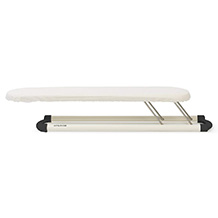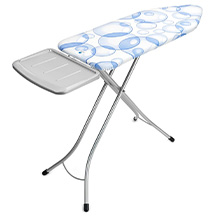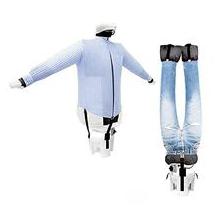Steam generator iron purchasing advice: how to choose the right product
- What You Need to Know
- Anyone who is dependent on ironed clothes every day for professional reasons or has to manage the ironing of an extended family will benefit from the advantages of a steam ironing station.
- Unlike an ordinary steam iron, the steam is not generated in the hand part, but in the station.
- Thanks to the large, separate water tank, it is easily possible to iron for several hours without interruption.
- Using their high steam output, they effortlessly cope with solid fabrics or even multiple layers of textiles, reducing working time and effort.
- With additional features such as an automatic temperature setting, an anti-calc system and a vertical steam function, ironing becomes even more comfortable.
With steam and pressure against wrinkles
Ironing is one of the least favorite household chores for many people, but hardly anyone who works or has a family can get around smoothing one garment or another. In a household of several people, working through the weekly mountain of laundry quickly becomes tedious. The most effective way to iron clothes is with steam, which penetrates deep into the fabric and makes it easier to remove creases. So if you iron your clothes with steam, you get rid of wrinkles faster, which is easier on the fibers. However, particularly stubborn wrinkles are difficult to remove even with a steam iron. In addition, the water has to be refilled about every 30 minutes.
A steam ironing station, a further development of the classic steam iron, provides a remedy: With it, you can handle even large piles of ironed laundry without interruptions for refilling the water. The larger amount of steam penetrates deeper into the fabric using high pressure and removes even stubborn wrinkles. Basically, it is a valuable help for every household. However, it is of particular benefit to families or professionals whose work requires ironed blouses, shirts and suits every day. Basically, the more ironing you have to do, the more worthwhile it is to buy a steam ironing station.
From hot coals to the steam station
The first irons were created in the 15th century. They consisted of a smooth metal soleplate, a cavity that users filled with hot coals, and a handle. However, since coals left marks on clothing, they quickly proved impractical. Instead, red-hot iron plates were inserted into the cavities above the bottom plate. At the beginning of the 20th century, the first electric ironers appeared on the market. Unlike their successors, they did not yet have a temperature regulator; as a result, burn marks often appeared. Many models were already available with a small spray bottle, as the moisture helped with smoothing. It was therefore only a matter of time before the first appliances with an integrated spray device appeared on the market. The first steam iron, the Vapo Matic from the French manufacturer Calor, conquered the international market in 1963. Since the turn of the millennium, the conventional steam iron has finally evolved into the steam ironing station.
More than just hot steam: the construction
There are always two parts to a steam ironing station: the station itself, also known as the steam generator or steam generator, and the hand part, i.e. the steam iron connected to it. The steam generator is available in two different versions. In the first version, the pressure boiler and water tank are identical. The steam is not generated in the boiler, but on the iron soleplate; thus, it is generated only at higher temperatures. This makes it possible to iron at low temperatures, but users would have to forgo the actual advantages of steam ironing in this temperature range. Moreover, if you want to refill water, you have to wait until the device has cooled down so as not to burn your fingers when opening the tank.
More practical is the second version, in which the water tank and boiler are installed separately. In a steam ironing station with a pressure boiler, the steam is generated and stored in the boiler. When the maximum pressure is reached, the iron is ready to start. Temperature and steam quantity are independent of each other, so even if the iron works at a low temperature, a large amount of steam can come out. This gently smoothes heat-sensitive synthetic and blended fabrics or silk textiles. Another advantage is that users can add water at any time during operation.
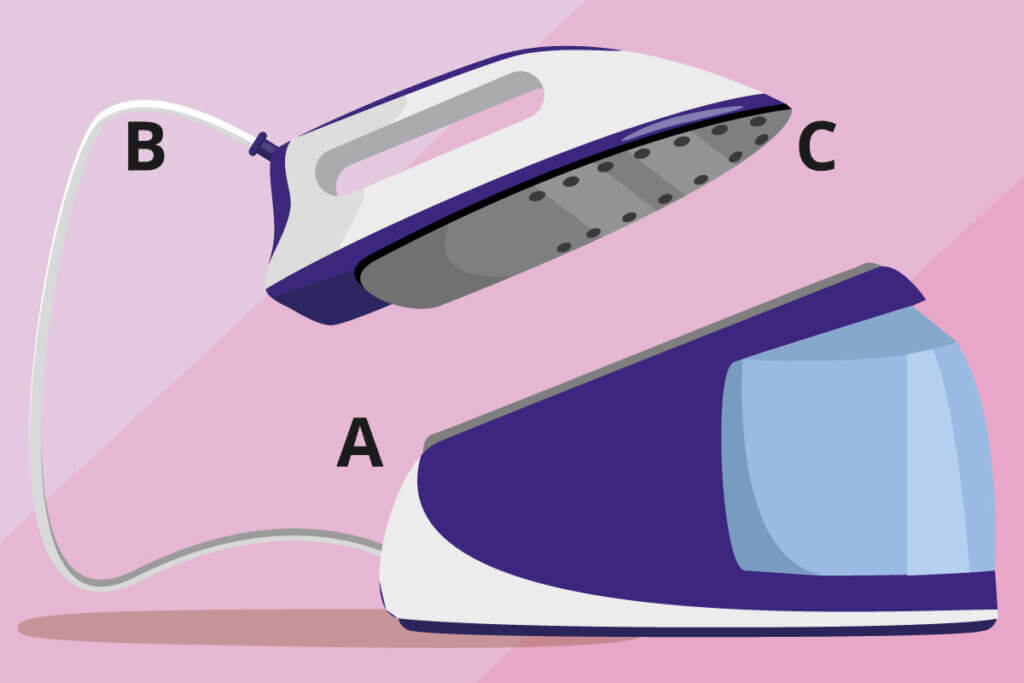
The unbeatable help for the larger household
Steam ironing stations have their price, but they are clearly superior to normal steam irons. Their greatest advantage lies in the separation of the water tank and the iron. The water tank, which heats the water up to 140 degrees and sends it to the iron as hot steam via the hose, is not located in the actual iron, unlike in an ordinary steam iron, but in the station. The generated steam then exits the iron soleplate via the outlet holes at a pressure of up to five bar. By comparison, in the classic steam iron without a station, the steam is generated directly in the iron without pressure, so that it is only produced at high temperatures.
A steam ironing station generates about three times the amount of steam. With the help of the high pressure, the steam penetrates deep into the fabric and smoothes even thick and heavily wrinkled fabrics effortlessly. The fibers swell and are easier to shape, whether bed linen, curtains or jackets. An ordinary steam iron moistens the ironed laundry only superficially. While this requires frequent re-ironing, a station only requires going over the fabric once. Since the steam reaches several layers thanks to the high pressure, it is even possible to smooth several layers of laundry at the same time with an ironing station, which means an enormous time saving. The steam nozzles of a steam ironing station are distributed only in the front part of the soleplate, which means that they first evenly moisten the fabric with steam before fixing the hot rear side of the soleplate. The even distribution of steam ensures uniform smoothing of textiles.
Those who are thinking about buying a steam ironing station, must take into account that the installation requires more space than an ordinary steam iron. Due to the size of the water tank, with a capacity of up to two liters, it is easily possible to iron for more than two hours at a time without having to refill water. Thus, more laundry can be ironed in a shorter time than is the case with a conventional iron. With these, the ironing process must be constantly interrupted by refilling the water tank. Since the water tank in steam ironing stations is not located on the hand part, the weight is reduced by up to half.
Pro Points
- Time saving due to high steam output
- Reliable smoothing of thick and multi-layered textiles
- Simultaneous smoothing of several garments
- Effective wrinkle removal thanks to shock steaming
- Gentle on delicate fabrics
- Hours of ironing without refilling
- Quick readiness for use due to short heat-up time
- Lightweight handpiece
Drawbacks
- High purchase costs
- Large space requirement
Ironing made easy – The most important buying criteria
Steam ironing stations come with many features that make ironing easier. The differences between the models start with the weight and extend to the material of the ironing soleplate. Depending on the amount of laundry and your budget, you may also need to consider factors such as the volume of the water tank, the power and the steam pressure. To help you make your purchase decision, we present the most important criteria.
Size and weight: ironing without fatigue
Size is especially important if you are not currently using the device and space is at a premium in your own home. Steam ironing stations basically require more space than ordinary steam irons. However, the iron itself should be as light as possible to allow comfortable ironing. The lack of a water tank makes it much lighter and easier to handle. While an ordinary steam iron usually weighs between 1.4 and 2 kilograms, the weight of the hand part of a station is ideally between 0.8 and 1.3 kilograms. The difference in weight is particularly noticeable with longer ironing units. While stations with pressure boilers weigh around five to seven kilograms in total, the lighter stations without pressure boilers only weigh around three kilograms. However, the total weight is only relevant if you have to move the station more frequently. In this case, you will benefit from a lighter and more compact steam ironing station.
The capacity: higher tank volume for more convenience
The capacity of the water tank determines how much laundry you can do with one fill. The larger the tank, the less often you need to refill water. A larger water tank therefore provides more convenience. Since it is attached externally on a steam ironing station, it offers a larger capacity of up to two liters than that of an ordinary steam iron, which can only store 300 to 350 milliliters. Consequently, the latter needs to be refilled every half hour, whereas the filling of a steam ironing station lasts up to five hours. So before making your purchase decision, consider the amount of laundry your household produces. The more ironing to be done, the larger the water tank should be. However, the larger the tank, the greater the size and overall weight of the station.
Help with filling
Ideally, the filling opening is easy to reach so that refilling water is simple. A level indicator on the water tank also helps to fill the tank with the right amount of water without spilling anything.
Power and wattage: decisive for the heating time
The wattage of the steam ironing station has less influence on the actual effective power than on the heat development. That is, it determines how quickly the ironing soleplate heats up and how hot it gets at maximum. The greater the power in watts, the faster the ironing sole reaches the selected temperature level. A station that is ready to use quickly is especially advantageous if you don’t have time to wait for a long time. Usually, a steam ironing station has between 1,500 and 2,500 watts. Units with power above 2,500 watts heat up within 60 seconds. For models with 2,200 to 2,500 watts, you don’t have to wait more than 90 seconds for the unit to be ready for use. However, less than 2,000 watts is not recommended, especially for steam ironing stations where the boiler and water tank are identical.
The pressure: Making proper steam
The effectiveness of the device depends largely on the steam output. The most important factor is the continuous steam, i.e. the amount of steam produced per minute. Depending on the model, the amount is between 50 and 140 grams per minute. High-performance devices even achieve quantities of 400 to 500 grams per minute. In order to be able to smooth thicker fabrics effectively, the steam output should not fall below a value of 100 grams per minute. The thicker the fabric, the more steam is required for smoothing. So, for a heavy linen cloth or denim, you need a device with a higher steam output.
In addition to the amount of steam, the steam pressure also affects the quality of the ironing result. It determines how well the steam can penetrate the fabric and how easily it can be smoothed. Most steam ironing stations work with a minimum pressure of 3.5 bar. The higher the pressure, the finer the steam. With a high pressure of six to eight bar, the steam can also penetrate several layers of fabric and is therefore up to any challenge.
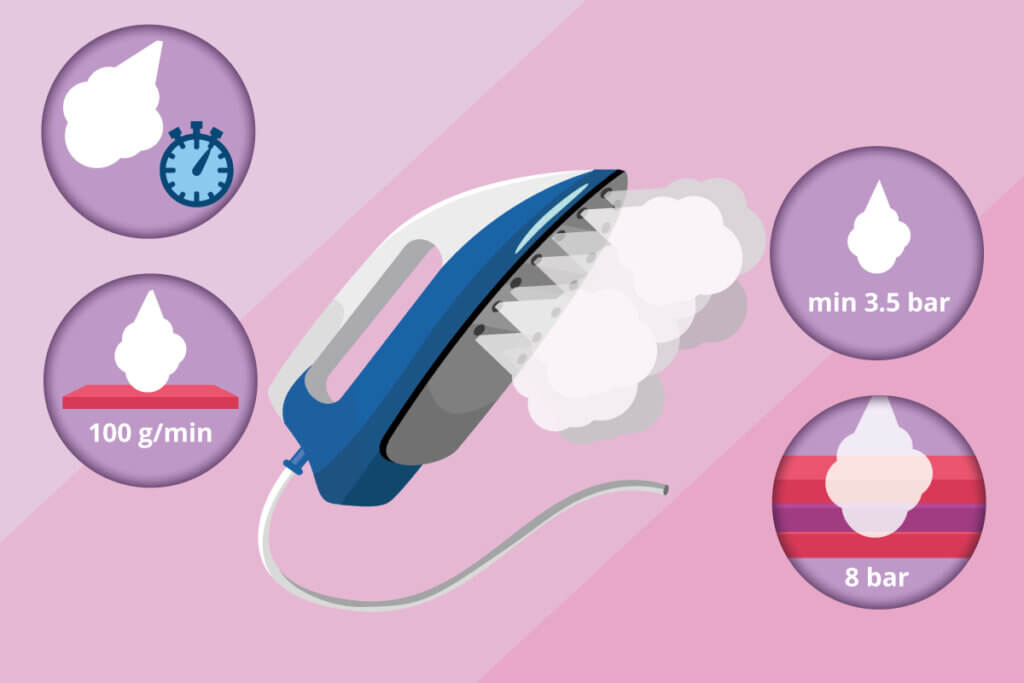
The soleplate: A question of material
When it comes to the ironing soleplate, the material or coating is particularly decisive. A smooth soleplate glides more smoothly over the fabric, which not only affects the ironing quality, but also makes work easier for the user. Ceramic, Aliminium or stainless steel are mostly used. Inexpensive models usually have aluminum soles. These are particularly scratch-resistant, but also comparatively rough, which is a hindrance to gliding. Stainless steel soles, which are also scratch-resistant but glide better than aluminum soles, have now become established as the standard. Ceramic ironing soles are particularly high-quality and easy to handle. In addition to the basic materials, many manufacturers provide their appliances with high-tech coatings such as durilium, glissium, inox or enamel to make the soleplate even smoother, stronger and more durable.
Overview of useful extra functions
Some extra functions make handling easier and increase safety. These include, for example, an eco function, a drip stop and an automatic switch-off. However, keep in mind that more functions are usually associated with higher purchase costs.
Controllable steam output

The continuous steam is controllable on most ironing stations. That is, the amount of steam is not linked to the temperature, but can be adjusted individually. The more precisely the steam output can be dosed, the better the ironing results. This is because a controllable steam output can be adapted to the respective properties of the textiles. Sensitive fabrics, for example, tolerate only a little steam, whereas thick clothing requires a lot of steam. As a rule, the amount of steam can be adjusted via a rotary knob. For example, if you set “120 g/min”, the iron will emit 120 grams of steam per minute when you press the steam button. The zero level is for dry ironing.
Vertical steam function
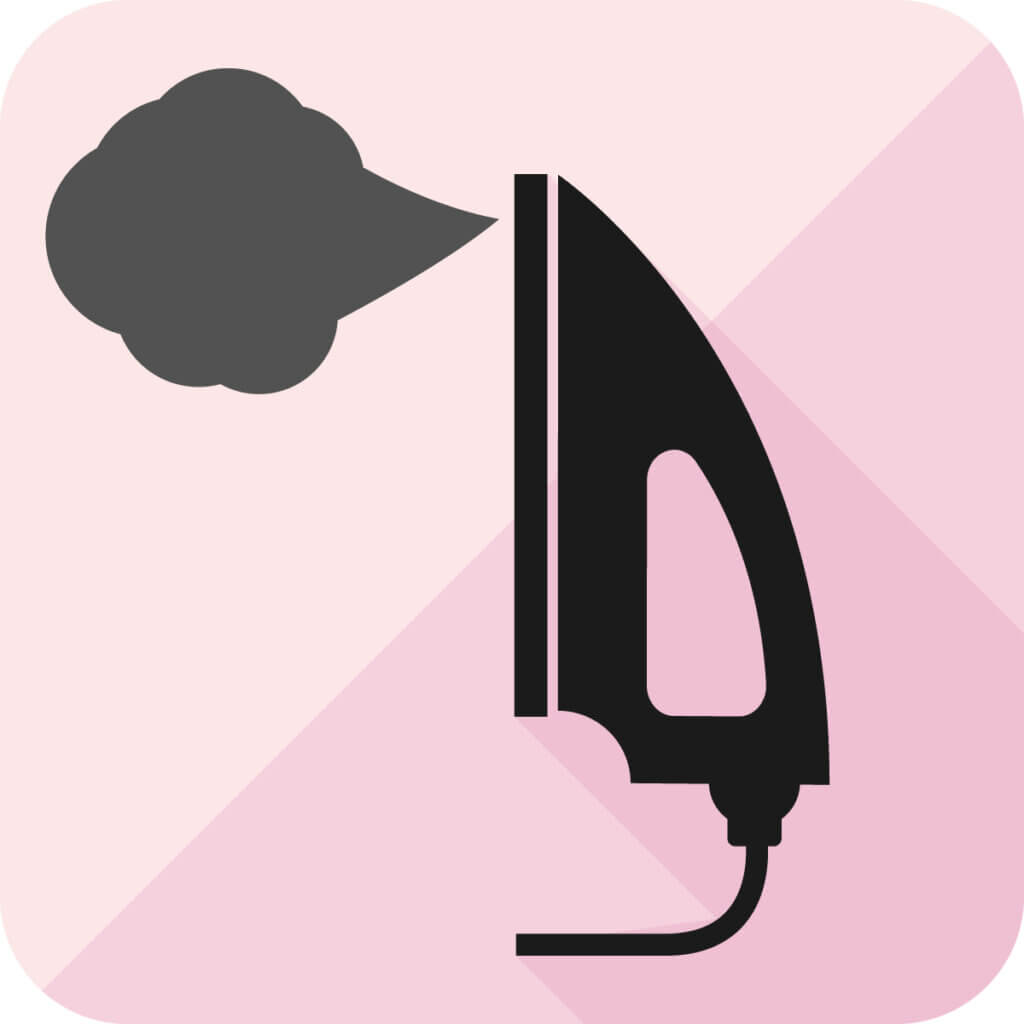
Most models have an extra steam output, also known as the vertical steam function, which is reminiscent of a steam straightener and is about three times the constant steam output. An extra steam output is helpful when solid fabrics or stubborn wrinkles need to be tackled. This function uses a button on the iron handle to emit a short, targeted burst of steam via individual outlet holes on the tip of the appliance. This makes it possible, for example, to steam hanging laundry items such as suits or curtains vertically, i.e. completely without an ironing board. The function is also useful when an evening dress needs a quick touch-up or particularly delicate fabrics should not come into contact with the hot ironing soleplate.
Anti-scale system

An anti-calc system is now standard on steam ironing stations. Manufacturers use different techniques to decalcify the appliances. With the help of a filter, they get the minerals out of the water so that it has the desired pH value. The lime produced in the process is collected in the lime cartridge. This lime collector, usually a narrow, pull-out compartment, must be emptied regularly. Since new cartridges have to be purchased for this purpose, additional costs are incurred. Other ironing stations use a granulate on which the limescale residues settle. As soon as it is time to descale the appliance, it emits a visual or audible signal, usually by the descaling indicator lighting up.
Automatic switch-off
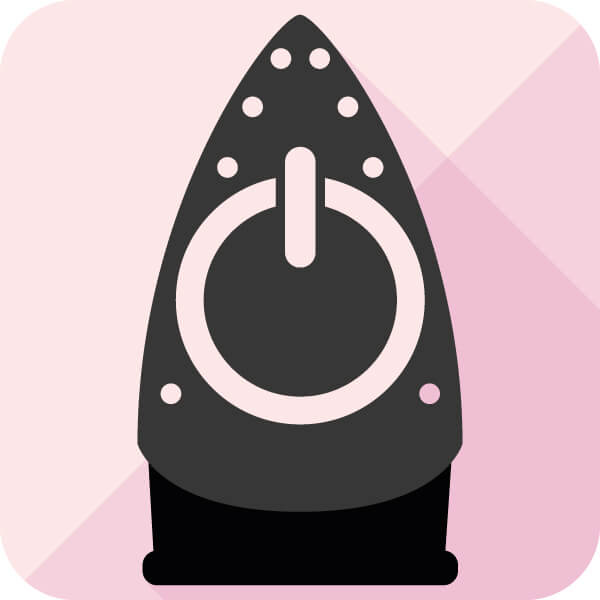
Since steam ironing stations operate at high temperatures and pressure, safety should always be a top priority. It becomes dangerous, for example, if you are distracted by something and briefly forget to turn on the iron. As a result, you could not only damage the piece of laundry, but even cause a fire. If the device has an automatic shutoff, this can not happen. Users no longer have to worry about whether they really turned off the station before leaving the house, because devices with this automatic safety feature turn off by themselves after a certain time, usually after ten minutes in standby mode, as well as after a few seconds in a horizontal position.
Automatic temperature selection

If you want to save yourself the hassle of pre-sorting your ironing, you should go for a steam ironing station with intelligent temperature technology. Automatic temperature selection, often found under “Optimum temperature”, regulates the heat using sensors on the ironing soleplate. This means there is no need to manually set the appropriate temperature for each fabric. With this setting, users can smooth all (ironable) materials, be it cotton or silk. So, you don’t run the risk of setting the temperature too hot and damaging the clothes as a result. This not only reduces the time spent on ironing, but also protects the laundry.
Eco mode

The eco or energy-saving mode reduces the power supply on the one hand and the amount of steam and pressure during ironing on the other. If the function is switched on, users save energy when ironing. Depending on the appliance, the savings range from 20 to 60 percent in terms of electricity consumption and 40 percent in terms of water consumption. Frequent ironers in particular benefit from this feature. However, it is also beneficial if you want to smooth delicate fabrics such as synthetics, wool or even silk. Since less steam is generated in this mode, Eco mode is suitable for easy-care fabrics, but for heavy or heavily wrinkled fabrics, it makes more sense to switch to the normal setting.
The following convenience features may also be available:
- Drip stop: It is not uncommon for dripping to occur when the iron soleplate cools down, causing the ironing board to become soaked or water spots to appear on fresh laundry. This is due to the fact that the steam condenses when the iron is at rest. A drip stop, or anti-drip system, prevents dripping.
- Automatic cord rewind: A loose cord is difficult to stow away. Loose ends often stick out during stowage. An automatic cable rewind is therefore practical. It not only saves the hassle of winding up the cable, but also prevents kinks. During use, users simply pull the cord out to the desired length.
- Removable water tank: If the water tank cannot be removed, users either have to carry the heavy station to the sink or the water to the station. Both options are inconvenient. This can be avoided with a removable water tank, as it can be easily refilled and reinserted at the faucet.
Tips and hints for use
Devices that work with heat are usually potential sources of danger. For this reason, certain safety measures are essential when using steam ironing stations. These begin with the preparation:
- Think carefully about where you want to place the steam ironing station. There should be sufficient light as well as sufficient air space above the station.
- Make sure that the ironing board and the steam ironing station are securely positioned.
- Be careful that the power cord does not become a tripping hazard.
- Make sure that the steam regulator is set to “zero” before you start operating the station.
In addition, you must observe the following:
- The ironed clothes must be completely dry before you start ironing, otherwise the seams will pull together and the fabric will wrinkle again.
- Do not start ironing until the control light indicates the end of the heating phase.
- Take a look at the ironing symbol in the laundry items to set the right temperature. While sturdy fabrics such as linen or cotton can tolerate higher temperatures, delicate fabrics such as synthetic fibers should be ironed at a lower temperature.
- Smooth the garments on the ironing board with your hands to avoid wrinkles when ironing.
- Iron the garments that require a low temperature first, and then iron the fabrics that require a higher temperature; this will save energy.
- Garments with embellishments, appliqués or sequins should always be ironed “inside out”. That is, you iron only the inner side. Alternatively, place a kitchen towel between them.
- Start with the difficult parts, i.e. the collar, button bands, cuffs and sleeves.
- Place the already ironed laundry on a rack without wrinkles and hang shirts or blouses on a hanger.
The tank filling: distilled water or tap water?
While steam irons used to be filled exclusively with distilled water, modern steam ironing stations can be filled with tap water without hesitation. It should be noted, however, that the limescale contained in the water will settle over time in all components that come into contact with the water. For this reason, the water quality plays an important role in the maintenance of the station. Here, the degree of hardness is particularly important: the harder the water, i.e. the more lime the water contains, the more frequently descaling occurs. How hard the tap water is depends on the location. Information can be obtained from the water supplier.
If you use distilled, i.e. desalinated and demineralized water, descaling is rarely necessary. The disadvantage is that it is aggressive to sensitive materials due to its lower pH value. Since distilled water binds carbon dioxide, it also promotes rust formation, causing the escaping steam to leave reddish-brown traces on clothing. For this reason, the use of tap water is recommended for most steam ironing stations.
Cleaning and care: For steam without end
There is little effort involved in cleaning and caring for a steam iron. This is mainly due to the fact that most modern devices are equipped with a descaling system, which saves users the hassle of descaling. It is usually sufficient to rinse out the limescale collector under running water. Always refer to the relevant operating instructions. To ensure that you get the longest possible use out of your ironing station and that it continues to iron perfectly, at least a minimum of care is necessary. But don’t forget to switch off the station, unplug it from the mains and let the iron cool down before cleaning.
Descaling by hand
For some devices, descaling must be done manually. For this purpose, it is best to use a special descaling liquid with citric or acetic acid, which you pour into the water tank. Then set the iron to the highest temperature for about ten minutes. After cooling down, the lime should have dissolved. Descaling is recommended after about 15 uses.
Regular cleaning includes not only wiping the surface of the housing, but also cleaning the water tank and the connecting hose. In this way, you prevent the formation of limescale deposits that make the device unusable in the long term. Calcification has a negative impact on the ironing result; smoothing becomes more laborious and takes longer. The steam nozzles can also become calcified or clogged despite an integrated anti-calcification system. Clean them carefully with a cotton swab soaked in vinegar. However, make sure that no cotton fluff sticks to the nozzles or the soleplate after this treatment.
The soleplate requires particularly careful maintenance. Dirt and dust deposits on the soleplate mean that the iron no longer glides effortlessly over the fabric. Over time, the soleplate becomes increasingly dull. Sometimes remnants of synthetic textiles stick to it if you have ironed too hot. Remove these with a cleaning agent specially designed for the material in question. As an alternative, home remedies such as lemon juice can also be used for aluminum soles. For light soiling, proceed as follows: Place the iron on a cloth moistened with vinegar. The surface should then be easy to wipe off – otherwise special cleaning pens or, in a pinch, an eraser will help.
The right ironing board for the steam ironing station
One of the most important utensils for comfortable handling of a steam ironing station is the right ironing board. Some stations already come with a table. These ironing systems consist of a table to which the station and the iron are firmly connected. If you decide to buy an ironing system, you save on buying it separately. If you lack the necessary space, you should definitely make sure to buy an ironing board specially designed for steam ironing stations. Since the base station takes up a lot of space, the surface of the board should be sufficiently large. In addition, in order to be able to support the weight of the ironing station and make the operation as user-friendly as possible, the four-legged rack should have a solid wide as well as lowered storage surface.
The ironing surface should also be impermeable to steam so that the excess steam does not cause moisture to accumulate. This would lead to the cover becoming wet and stained. So-called active ironing boards with a motorized suction function that removes the condensed water are particularly practical. Often, this effect can also be reversed: Via the suction function, the air is blown out, whereby, for example, delicate fabrics can be fixed and ironed accordingly gently. Even though ironing boards with blowing and suction functions cost considerably more, the investment is worthwhile because the ironing results are optimized. Heated ironing surfaces that counteract the moisture from steam irons are an alternative.
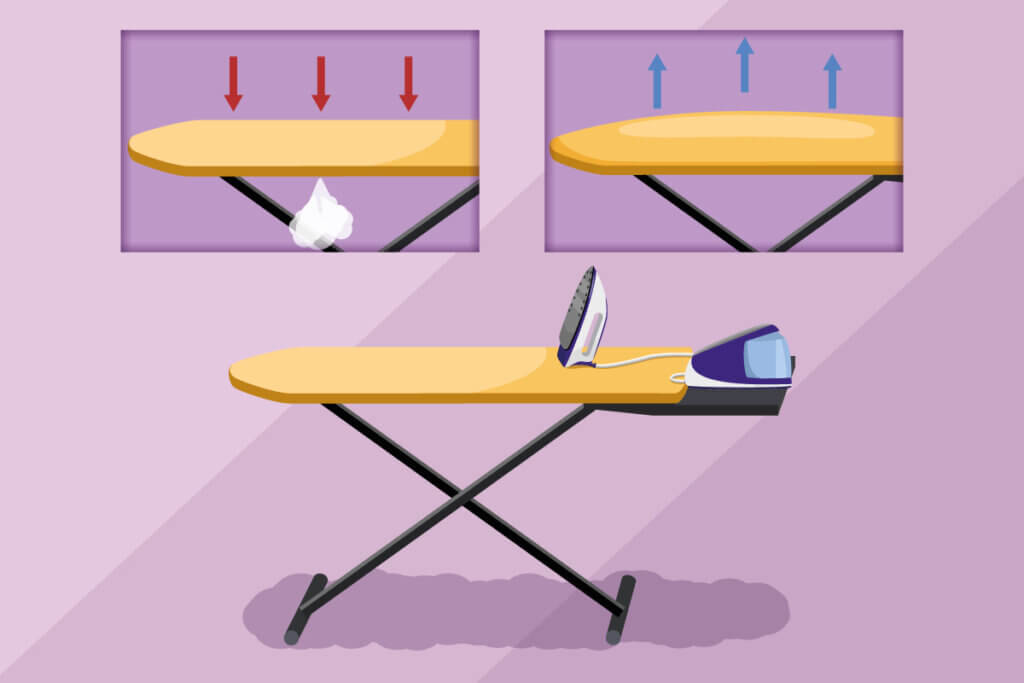
Depending on your height, you should also consider a height-adjustable model. This has the advantage that in a multi-person household, everyone can iron in an upright position for several hours in a relaxed manner and without back pain. A majority of ironing boards have a height adjustment of 70 to 100 centimeters. Foldable models that can be stored in no time at all to save space are also practical, as are ironing boards with integrated power sockets.
The leading manufacturers – who is ironing their way to the top?
The price range for steam ironing stations is very wide. For example, the basic version of the household aid is available from as little as 50 euros, but prices range upwards to 500 euros. Higher-priced models are often equipped with numerous extras that make ironing more efficient and handling easier. They are more powerful and score points with more steam pressure as well as short heat-up times. In addition, they are equipped with high-quality materials, which gives them a longer service life than cheaper devices. Models with pressure boilers are always priced a bit higher.
The leading manufacturers of steam ironing stations include the following:
- Siemens: as one of the world’s largest companies in the electronics sector, Siemens offers a wide range of products. Siemens is particularly known for its steam ironing stations with self-regulating temperature and separate water tank. With the TS47400DE model, Siemens offers a powerful ironing station that achieves a steam pressure of up to 6.5 bar and a steam output of up to 400 grams per minute.
- AEG: AEG products are also among the most popular items in the home appliance sector. Although the selection of steam ironing stations at AEG is not as large as that of other manufacturers, the DBS 3370 model with residual heat indicator is still one of the best-selling devices. When the temperature drops below 40 degrees Celsius, the indicator changes color, letting users know they can safely put the unit away. Thanks to thermoblock technology, AEG steam ironing stations reach the desired heating level in as little as 90 seconds.
- Tefal: French manufacturer Tefal not only has cookware with non-stick coating in its repertoire, but also a wide selection of steam ironing stations for every budget. The Tefal GV8461 Pro Express Turbo steam ironing station impresses with a particularly scratch-resistant and durable as well as self-cleaning ceramic soleplate, an integrated limescale container, an adjustable steam output, an automatic switch-off, a transport lock and an automatic cable rewind. A slimmed-down and correspondingly cheaper version is offered by the Tefal GV5245 model.
- Bosch: The German company Bosch primarily offers steam ironing stations in higher price ranges. For this, products like the Bosch TDS6040 Series 6 or the Bosch TDS8030DE Steam Station Series 8 are equipped with all kinds of features, such as an automatic temperature control, a descaling function, and a locking system for safe transport. The Bosch TDS4050 steam station series 4 impresses not only with its high-quality workmanship, but also with a power of 2,400 watts and a maximum steam pressure of 5.5 bar.
- Klarstein: Klarstein steam ironing stations are mainly in the lower price category, but this does not mean poor quality by any means. The Klarstein Speed Iron model, for example, has a large tank that can store 1.7 liters of water and thus generate steam for about two hours. However, with a maximum pressure of 3.5 bar and a maximum steam volume of 90 grams per minute, the Klarstein Speed Iron cannot quite keep up with some comparable brand models in terms of steam performance.
- Philips: The Dutch brand Philips specializes in household appliances and offers a wide range of steam ironing stations. The Philips GC9642/60 PerfectCare Elite is a steam ironing station for high demands. Among other things, it convinces with a steam pressure of up to 7.2 bar and a noise-reducing technology that allows the device to work particularly quietly even at maximum steam output. The Philips GC6704/30 Fast CareCompact steam ironing station is somewhat more compact.
- Rowenta: Rowenta has models for home use as well as professional devices in its range. One popular product is the Rowenta DG8531 Perfect Steam Extreme steam ironing station. With a total of 400 nozzles, the model from Rowenta ensures a particularly homogeneous distribution of steam.

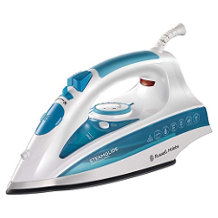
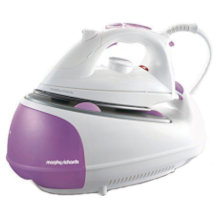
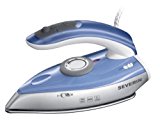
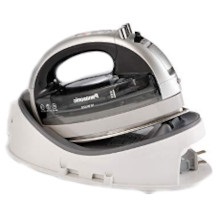
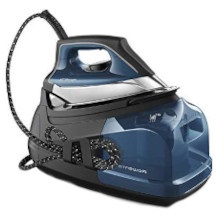
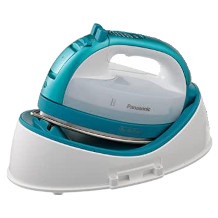
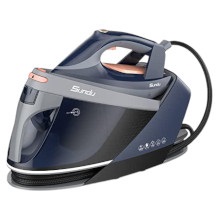
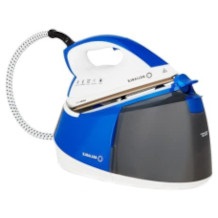

 4,135 reviews
4,135 reviews
